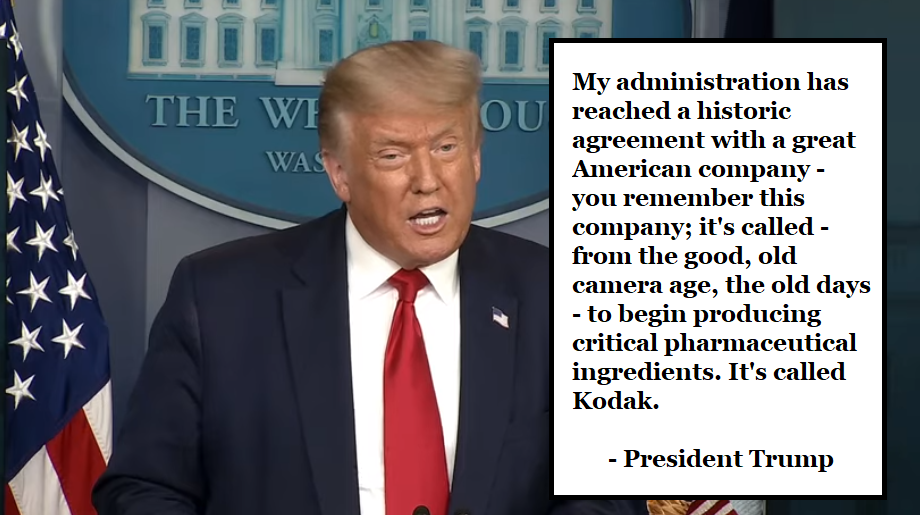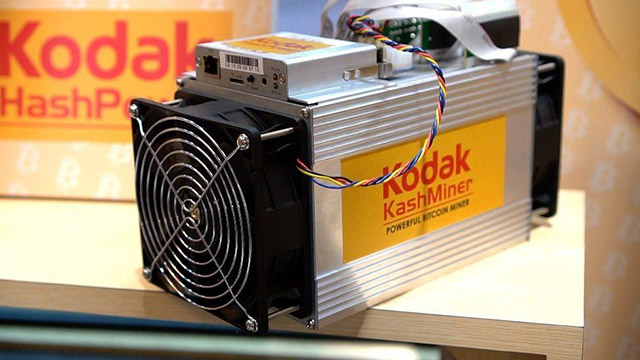ogc163
Superstar
Bobo Justus: Tell me about the oranges, Lilly…
[kicks over a bag of oranges]
Bobo Justus: While you put those in the towel.
Lilly Dillon: [kneels on the floor and starts picking them up] You hit a person with the oranges wrapped in a towel… they get big, ugly looking bruises. But they don’t really get hurt, not if you do it right. It’s for working scams against insurance companies.
Bobo Justus: And if you do it wrong?
Lilly Dillon: [terrified] It can louse up your insides. You can get p… p… p-p-p-p-p
Bobo Justus: What?
Lilly Dillon: P-permanent damage.
The best movie about con games is The Grifters, and the best scene in that movie is “Bobo and the oranges”, where mob boss Bobo terrorizes and punishes Lilly for screwing up one of his money laundering schemes. It’s one of the top-ten brutally compelling scenes in any movie I’ve seen, not so much for the physical violence as for the psychological violence.
We’re all Lilly Dillon today.
Our political and market worlds have become an unending sea of grift … small cons, big cons, short cons, long cons … and every day the distinction between grifters and squares becomes more and more blurred.
Day after day, we’re all getting smacked by Bobo and his bag of oranges, hoping to god that we only get badly bruised in the process.
But we all know that we’re past the point of permanent damage.
We’ve been assaulted by three grifts in just the past week … three smacks from Bobo and his bag of oranges … each deserving of an Epsilon Theory note.
Here’s chapter 1.


On Tuesday afternoon, the White House announced that Kodak – a public company with less than $100 million in market cap, basically a pension fund with a famous brand name attached – would receive $765 million in “loans” from the US government to create a “pharmaceutical start-up” that over a period of 8 YEARS will start making pharmaceutical “supplies”. Whatever the hell that means.
This $765 million in non-recourse, non-secured loans for pharmaceutical supply production, given to this micro-cap company with zero experience or expertise in pharmaceutical supply production, comes from the International Development Finance Corporation (DFC), a $60 billion piggy bank established by the Trump administration in 2019 to replace the Overseas Private Investment Corporation (OPIC).
Yes, “international development” and “overseas investment”.
The DFC is an institution that, per its mission statement and Congressional charter via the 2018 Better Utilization of Investments Leading to Development (BUILD) Act, is “focused on promoting inclusive economic growth in the world’s least developed countries.”
I mean … I knew things were bad in Rochester, but I didn’t know they were that bad.
To dust off an old Epsilon Theory catchphrase:
They’re. Not. Even. Pretending. Anymore.
Who is “they”?
On the corporate-grift side, it’s Kodak Chairman and CEO Jim Continenza (SEC CIK 0001197594), who picked up about 3 million shares and cheap options over the past year. It’s Kodak board member George Karfunkel (SEC CIK 0001085765), of the private equity and banking Zyskind-Karfunkel family, with his 6.4 million shares. It’s Kodak board member Philippe Katz (SEC CIK 0001579836), who owns about 4.3 million shares through at least five shell companies.

Here’s a pic of Jim Continenza, shown here on a magazine cover touting Vivial, the other company where he’s also Chairman and CEO. Vivial is a digital marketing company, which is Jim’s particular forte.
Oh, wait, you thought Jim had a background in manufacturing or pharmaceuticals? Hahahahahahaha. Hooo, boy, that’s rich. No, no … Jim is a marketing guy. Shocking, I know.
Based on yesterday’s closing price of $33.20 for the stock, I figure Jim and George and Philippe have made about $400 million over the past 48 hours.
The numbers looked even better when Kodak hit $53 earlier earlier in the day, but easy come, easy go.
I’m focused on Jim and George and Philippe, each of whom were granted tens of thousands of shares in Kodak just over the past 60 days, because this is where the real money from crony capitalism grift is made. But I’d be remiss if I didn’t acknowledge the effort of the small-fry Kodak grifters who covered their tracks and tipped their buddies about the deal, sparking 1.65 million Kodak shares trading for $2 and change on Monday, about 25 times the average trading volume of the prior week, in advance of the Tuesday announcement.
I would hope that lots of people in the Rochester area are about to get a crash course in what constitutes material non-public information and what their responsibilities are in this regard, whether they are the tipper OR the tippee.
But with the current priorities of the SEC and the Justice Department, I’m not holding my breath.
[kicks over a bag of oranges]
Bobo Justus: While you put those in the towel.
Lilly Dillon: [kneels on the floor and starts picking them up] You hit a person with the oranges wrapped in a towel… they get big, ugly looking bruises. But they don’t really get hurt, not if you do it right. It’s for working scams against insurance companies.
Bobo Justus: And if you do it wrong?
Lilly Dillon: [terrified] It can louse up your insides. You can get p… p… p-p-p-p-p
Bobo Justus: What?
Lilly Dillon: P-permanent damage.
The best movie about con games is The Grifters, and the best scene in that movie is “Bobo and the oranges”, where mob boss Bobo terrorizes and punishes Lilly for screwing up one of his money laundering schemes. It’s one of the top-ten brutally compelling scenes in any movie I’ve seen, not so much for the physical violence as for the psychological violence.
We’re all Lilly Dillon today.
Our political and market worlds have become an unending sea of grift … small cons, big cons, short cons, long cons … and every day the distinction between grifters and squares becomes more and more blurred.
Day after day, we’re all getting smacked by Bobo and his bag of oranges, hoping to god that we only get badly bruised in the process.
But we all know that we’re past the point of permanent damage.
We’ve been assaulted by three grifts in just the past week … three smacks from Bobo and his bag of oranges … each deserving of an Epsilon Theory note.
Here’s chapter 1.


On Tuesday afternoon, the White House announced that Kodak – a public company with less than $100 million in market cap, basically a pension fund with a famous brand name attached – would receive $765 million in “loans” from the US government to create a “pharmaceutical start-up” that over a period of 8 YEARS will start making pharmaceutical “supplies”. Whatever the hell that means.
This $765 million in non-recourse, non-secured loans for pharmaceutical supply production, given to this micro-cap company with zero experience or expertise in pharmaceutical supply production, comes from the International Development Finance Corporation (DFC), a $60 billion piggy bank established by the Trump administration in 2019 to replace the Overseas Private Investment Corporation (OPIC).
Yes, “international development” and “overseas investment”.
The DFC is an institution that, per its mission statement and Congressional charter via the 2018 Better Utilization of Investments Leading to Development (BUILD) Act, is “focused on promoting inclusive economic growth in the world’s least developed countries.”
I mean … I knew things were bad in Rochester, but I didn’t know they were that bad.
To dust off an old Epsilon Theory catchphrase:
They’re. Not. Even. Pretending. Anymore.
Who is “they”?
On the corporate-grift side, it’s Kodak Chairman and CEO Jim Continenza (SEC CIK 0001197594), who picked up about 3 million shares and cheap options over the past year. It’s Kodak board member George Karfunkel (SEC CIK 0001085765), of the private equity and banking Zyskind-Karfunkel family, with his 6.4 million shares. It’s Kodak board member Philippe Katz (SEC CIK 0001579836), who owns about 4.3 million shares through at least five shell companies.

Here’s a pic of Jim Continenza, shown here on a magazine cover touting Vivial, the other company where he’s also Chairman and CEO. Vivial is a digital marketing company, which is Jim’s particular forte.
Oh, wait, you thought Jim had a background in manufacturing or pharmaceuticals? Hahahahahahaha. Hooo, boy, that’s rich. No, no … Jim is a marketing guy. Shocking, I know.
Based on yesterday’s closing price of $33.20 for the stock, I figure Jim and George and Philippe have made about $400 million over the past 48 hours.
The numbers looked even better when Kodak hit $53 earlier earlier in the day, but easy come, easy go.
I’m focused on Jim and George and Philippe, each of whom were granted tens of thousands of shares in Kodak just over the past 60 days, because this is where the real money from crony capitalism grift is made. But I’d be remiss if I didn’t acknowledge the effort of the small-fry Kodak grifters who covered their tracks and tipped their buddies about the deal, sparking 1.65 million Kodak shares trading for $2 and change on Monday, about 25 times the average trading volume of the prior week, in advance of the Tuesday announcement.
I would hope that lots of people in the Rochester area are about to get a crash course in what constitutes material non-public information and what their responsibilities are in this regard, whether they are the tipper OR the tippee.
But with the current priorities of the SEC and the Justice Department, I’m not holding my breath.



 shameless and blatant. And they dumbed down society enough to not care
shameless and blatant. And they dumbed down society enough to not care
